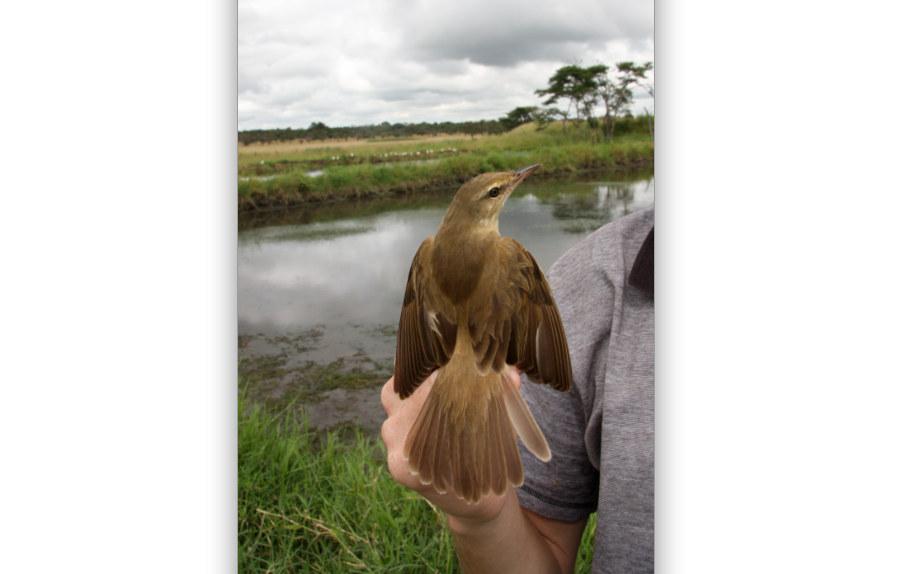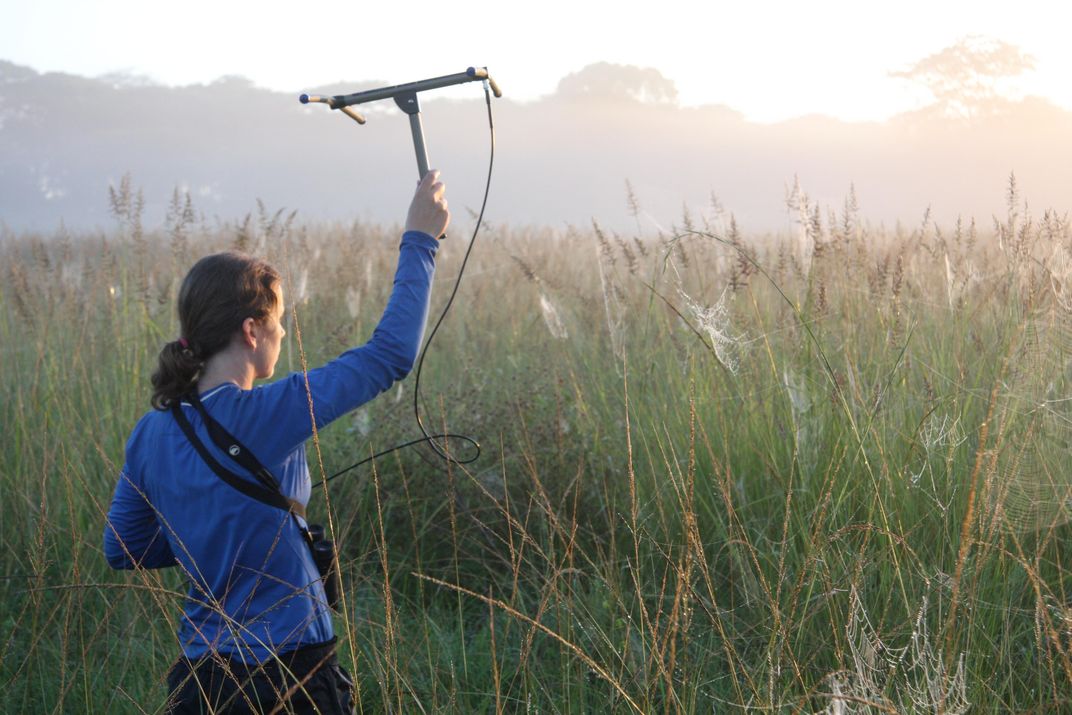These Birds Spend Winter Practicing Their Love Songs for the Ladies
Some migratory species may spend their time in Africa getting ready to woo mates in the spring
/https://tf-cmsv2-smithsonianmag-media.s3.amazonaws.com/filer/aa/45/aa458413-bc8a-409b-aa54-4f4d37978d83/42-67163616.jpg)
Like guys practicing their pick-up lines before going to the bar, great reed warblers practice their mate attraction songs in Africa before heading to their northern breeding grounds, a new study finds.
Great reed warblers are well-studied birds that spend their summers in Europe and Asia. They’re not exciting birds to look at—both males and females are a drab brown—but the males sing elaborate songs to attract females.
“They are probably the warbler species that sings most,” says Dennis Hasselquist, an animal ecologist at Lund University in Sweden. To lure a female warbler, the males sing from sunrise to sunset, a concert that can last for 21 hours at Hasselquist’s study site in Sweden.
When the male succeeds, the pair will mate, and he sticks around for a few days singing a short territorial song to ward off other males. Then he starts up again, trying to lure another female into his harem. A real avian Casanova can catch four or five mates in a single breeding season, but “20 percent of males can sing and sing for weeks and not get any females,” Hasselquist says.
What happens in Africa, though, is less well known. Singing can be a costly activity for a bird—it takes up valuable energy, consumes time that could be used for finding food and might attract a predator. So while it’s worth it for a bird to sing in Europe where it has to find a mate, it might be better to keep quiet while vacationing in the south, where no breeding takes place.
Despite the cost, though, some 62 percent of all the bird species that migrate south from Eurasia sing on their winter grounds in sub-Saharan Africa.
Marjorie Sorensen, an ecologist now at Goethe University in Germany, was in Zambia when she noticed that great reed warblers were among this winter chorus, singing with plenty of vigor and energy. “It’s not a very pretty song, to be honest,” she says. “It’s very harsh, kind of creaking.” And loud, she says. Very, very loud.

Scientists had suspected that Eurasian birds might be guarding territory with their winter trills, but “no one has really tested this,” Sorensen says. And she suspected that there might be other reasons for the winter tunes. She and her colleagues knew that during the breeding season, song behavior is linked to testosterone. Perhaps, they thought, the birds that sang were those that still had some of this hormone left in their system. Or maybe the birds were practicing for the spring.
Sorensen and her team began by capturing and tagging great reed warblers at their study site in Zambia, a local cattle farm and nature reserve where the birds were hiding in six-foot-tall reeds. The researchers took blood samples to analyze testosterone levels and recorded songs the birds sang.
None of the 21 marked females were heard to croon, but almost half of the 43 males sang. Tellingly, the vocal males belted versions of the mate attraction song rather than the shorter territorial defense tune.
The singers didn’t have higher testosterone levels than the birds that stayed silent. But their African tunes were a bit different than what warblers sing in Europe, the researchers found. The songs were longer and less repetitive, with the birds switching quickly between syllables, the team reported January 26 in American Naturalist.
“What we think is, on the wintering grounds, males that have the most energy and resources may be able to expend some of that on singing,” Sorensen says. That practice may pay off if a male is able to add more syllables to his song. “For great reed warblers, the more syllables a male has in his repertoire, the more appealing he will be to a prospective female.”
Hasselquist notes that great reed warblers, which can live for more than a decade, have been known to change their songs from year to year, adding a few syllables each time. “I have no idea why they do that,” he says, but it’s possible that they’re learning over the winter.

Sorensen and her team then expanded their analysis to include 57 songbird species that migrate from Eurasia to Africa. The ones that spent the most time singing in winter were those in which males produce the most complex breeding songs but have the most drab plumage. For species with flashier feathers and simpler songs, Sorensen says, practice might not be as critical.
Bruce Byers, who studies songbird vocalizations at the University of Massachusetts Amherst, says that he’d like to see more information about how frequently and intensely the birds sing in Zambia. The speculation that the winter singing serves as practice for breeding-season singing seems plausible, he says. But it’s also possible that there are other functions for the tunes, or that the winter crooning serves no essential function at all.
Plus, if practice is really important for plain birds, why do half the great reed warbler males forgo singing, wonders Robert Montgomerie, an evolutionary biologist at Queen’s University in Canada. “Like any good study,” he says, this one “posed more questions than it answered.”
/https://tf-cmsv2-smithsonianmag-media.s3.amazonaws.com/accounts/headshot/Sarah-Zielinski-240.jpg)
/https://tf-cmsv2-smithsonianmag-media.s3.amazonaws.com/accounts/headshot/Sarah-Zielinski-240.jpg)